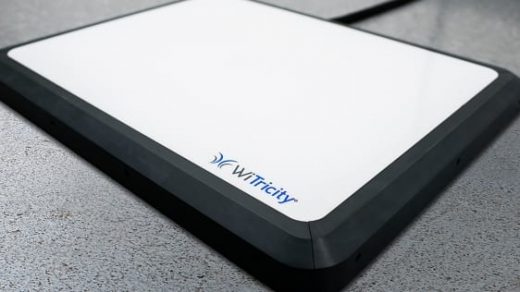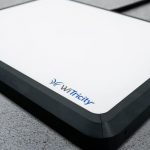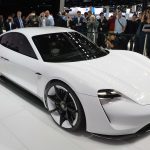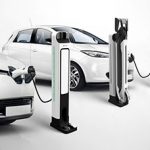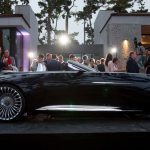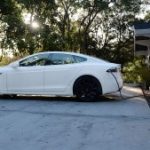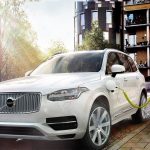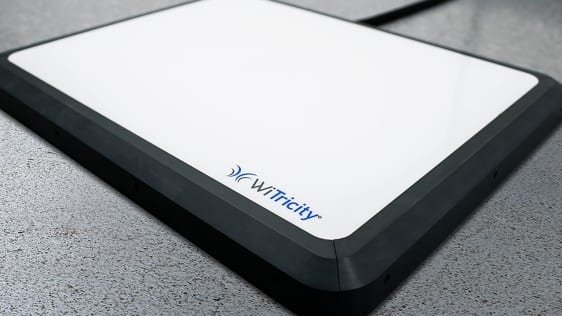The Little Company That’s Bringing Wireless Charging To Electric Cars
February 27, 2018
The chances are pretty good that you’ll be one of the millions of consumers who’ll buy an electric or hybrid vehicle in the next decade.
Right now only about one percent of the cars on the road are electric vehicles, but by almost all accounts EVs will be speeding toward the mainstream by 2030. Some automakers, like Volvo, expect to sell nothing but EVs and hybrids. The U.K., France, China, Norway, and even Germany are now talking about banning the sale of fossil-fueled vehicles in the coming decades.

But if or when you find yourself owning an EV or hybrid, you may discover some of the little annoyances of owning one. Chief among them is charging. Plugging the thing in every night (and remembering that they’re plugged in when you leave in the morning) might begin to seem like a hassle. An even bigger hassle is worrying about range, or whether the battery has enough juice to get you there and back.
“It’s a pain in the ass,” says Alex Gruzen, CEO of WiTricity, a Watertown, Massachusetts-based startup that develops wireless charging technology for cars. Gruzen says WiTricity’s wireless charging tech will ease both of those friction points and sweeten the deal for consumers considering the switch to a hybrid or an electric. The company isn’t exactly a household name, but after over a decade of development and a smattering of efforts in the consumer electronics arena, it’s already managed to position itself very well to provide much of the wireless charging technology in the EVs and hybrids of the future.
In fact, BMW’s 530e, which the automaker has said would come to market later this year, will feature a wireless charging system that uses WiTricity technology.
Wireless charging may make it possible for EVs to be constantly “topping up” their charge as they park over a public charger or rest in the garage overnight. “We want to take that range anxiety out of the equation so that they can do what they want to do,” Gruzen said.
Gruzen also points out that with the advent of fleets of driverless taxis, there will be no one to plug in a charging wire. A driverless car can easily position itself over a charging pad, however. “We see wireless charging in the same way we see the sensors on the car, the LIDaR system, and the machine learning,” Gruzen said. “We see wireless charging is the other leg in that stool.”
How It Works
Wireless charging for cars looks something like this: The driver pulls into a garage or parking space and positions the front of the car over a power mat (Gruzen calls it a “pizza box”) on the ground. Some charging pads will be built into the surface and won’t protrude upward at all. If the car is positioned right, charging begins automatically.
Inside the power mat, a circular coil converts alternating electrical current into magnetic waves. A power amplifier controls the current and the frequency of the waves. Up inside the car, a receiver device situated near the car’s power management system contains another coil that’s tuned to receive magnetic waves at the same frequency as the source coil. The receiver then turns the magnetic energy back into electric current to be stored in the car’s battery.
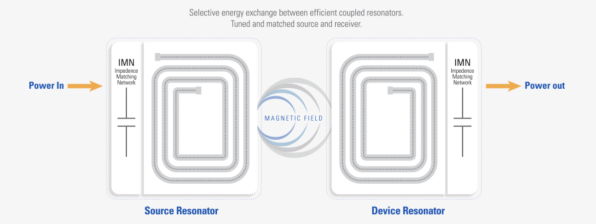
Magnetic resonance is more efficient than other wireless charging technologies in that it loses very little (7% to 10%) of the power as it moves through the air. It’s difficult to make a direct comparison to a radio frequency-based system because none exist for automobile charging, but suffice it to say it’s more than 10%. Magnetic resonance is more forgiving, too; meaning that the source and receiver don’t have to be placed just so, or right next to each other. So in this case the car doesn’t have to be perfectly positioned over the power mat to get full-power charge.
A Wireless Charging Pioneer
WiTricity was actually brought into being by a desire to charge consumer devices like phones wirelessly. The company was founded by an MIT physics professor named Marin Soljacic (pronounced Soul-ya-cheech) in 2007. It was the dawn of the smartphone age and Soljacic, already tired of constantly plugging his phone into the wall, began thinking about the tantalizing idea of wireless charging using magnetic waves.
That summer, the new company demonstrated its “highly resonant wireless power transfer,” as they called it, lighting up a 60-watt bulb from a power source more than two meters away. The impressive result was a research paper published in the journal Science in July 2007.
But after years of trying, WiTricity would end up missing the boat on wireless charging for consumer devices. Despite tie-ups like a wirelessly charged 2-in-1 notebook Dell released last year, WiTricity’s magnetic resonance technology would not emerge as the standard way of charging up gadgets like smartphones. After a long standards war, only the Qi and Powermat standards have survived, and Powermat recently announced plans to interoperate with Qi.
So WiTricity threw in the towel on consumer tech late last year and put all its resources behind wireless charging systems for electric vehicles. It closed its Austin, Texas, office and slimmed down from 80 to 55 employees.
But WiTricity doesn’t intend to manufacture the hardware used in wireless charging systems. “They’ll be built for the automakers by their classic Tier 1 supply base,” Gruzen said, meaning that established suppliers like Delphi will make the systems at the request of the automakers. WiTricity, which holds 245 patents on their technology, sells only the recipe. That is, it licenses its intellectual property and provides reference designs to show partners how to build the hardware.
Powerful Competition
WiTricity’s main rival in the electric vehicle charging space is Qualcomm. Qualcomm’s wireless charging system, called Halo, is also based on magnetic resonance technology. It does the same basic things WiTricity does. Halo also offers some add-on features, Qualcomm’s John Boodhansingh told me, like the ability to detect when a foreign object is too near the charging pad. (Actually, WiTricity says its technology also offers this foreign object detection.)
Qualcomm too will be leveraging strong relationships with automakers and suppliers all over the world to get the Halo technology into as many new EVs and hybrids as possible. And, like WiTricity, Qualcomm holds numerous patents on the necessary core technology. That means automakers will pay royalties to Qualcomm or WiTricity or both every time they want to build any existing wireless charging technology into a new car model.
“It’s kind of true with both companies,” explained Navigant Research analyst Lisa Jerram. “If a [car] company wants to offer a wireless charging solution it does seem it would have to be using some of their tech.”
Qualcomm, of course, is a far bigger company than WiTricity, and a far better-known brand. But Qualcomm also hasn’t been a model of stability lately, given that it’s currently trying to manage a potentially hostile takeover bid by the chip maker Broadcom.
Amid the competition, both companies have played central roles in the Society of Automotive Engineers’ effort to create a common standard on which all automotive wireless charging systems can be based. The project will get all automakers and suppliers singing from the same hymnal, so that a car with a wireless receiver from Vendor A can get power from a transceiver made by Vendor B, for example.
EVs will come in all shapes and sizes, Gruzen explained, so the standard is needed to provide a set of spatial ranges within which consumers can expect all systems to work at 11 kilowatts per hour. The owner of a new Audi EV should be certain the car will start if she positions the charging receiver under the front of the car within 10 to 25 centimeters above, within 15 centimeters side-to-side, and within 10 centimeters to the front or rear of a Mercedes ground pad.
The standard is also crucial for the makers of public charging systems that must work with any kind of EV. It also guarantees that cars with charging systems that use Qualcomm’s technology will be able to get a charge from a charging pad built with WiTricity’s technology. The standard will be announced in the next few months and is expected to be ratified in late 2018 or early 2019.
Prospects
WiTricity is a venture-backed startup, albeit a decade-old one. Startups often must struggle to keep the lights on while the market becomes ready for its product. In WiTricity’s case it seems likely that, despite last year’s layoffs, the company has the staying power to eventually reap its licensing rewards as electric vehicle adoption heats up.
Gruzen says WiTricity has brought in roughly $60 million in revenue to date, mainly licensing fees. The company has raised a total of $68 million in multiple funding rounds, the last one in 2015. Toyota invested an undisclosed amount in Witricity in 2011 (WiTricity later divulged that it was in the “single digit” millions). Gruzen expects the company to raise one more funding round. And it’s hiring.
“My sense is that they have the right partnerships to see it through,” Navigant’s Jerram said. “There’s a lot of things you have to manage, a lot of challenges along the way, but they have a lot of good people and I think all those challenges will be met.”
WiTricity’s long-term success may depend on the way the auto industry introduces and markets wireless charging.
“It’s really the automakers that are trying to do this,” says Navigant Research analyst Lisa Jerram, emphasizing that it’s the automakers that will determine the value placed on charging a car without a cable. “It’s unclear how much that’s going to be,” Jerram said. She said some premium automakers could ask as much as $2,000 for wireless charging.
Nobody knows for sure how wireless charging will be packaged: It may be a built-in cost of the vehicle, or it could be sold as an add-on. How automakers market the technology may determine consumer perception and demand. Right now, Jerram isn’t expecting wireless charging to be a hit feature, not right off the bat anyway.
“In general we are pretty conservative on it: It seems like it’s a nice-to-have,” she said. “Unless it’s priced really reasonably, there’s not going to be a rapid shift to it.”
Consumers might indeed balk at the feature if it’s sold like an expensive premium addition. At the same time, many consumers may need to own an EV for a while before they fully appreciate the value of wireless charging.
Gruzen and company probably aren’t panicking over this. With a very strong IP position, the first WiTricity-powered wireless charging systems rolling off the BMW lot later this year, and 10 years already under their collective belt, they can probably wait a little longer to reap their reward.
(79)

